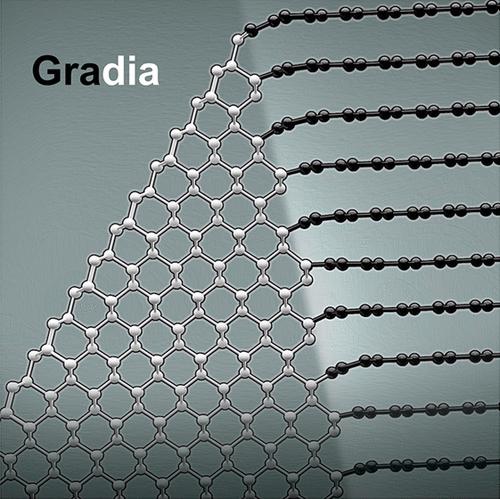当前位置:
X-MOL 学术
›
Acc. Mater. Res.
›
论文详情
Our official English website, www.x-mol.net, welcomes your feedback! (Note: you will need to create a separate account there.)
Discovery of Gradia between Graphite and Diamond
Accounts of Materials Research ( IF 14.6 ) Pub Date : 2024-04-07 , DOI: 10.1021/accountsmr.4c00029 Baozhong Li 1 , Bing Liu 1 , Kun Luo 1 , Ke Tong 1 , Zhisheng Zhao 1 , Yongjun Tian 1
Accounts of Materials Research ( IF 14.6 ) Pub Date : 2024-04-07 , DOI: 10.1021/accountsmr.4c00029 Baozhong Li 1 , Bing Liu 1 , Kun Luo 1 , Ke Tong 1 , Zhisheng Zhao 1 , Yongjun Tian 1
Affiliation

|
Graphite and diamond, two naturally occurring carbon allotropes, have been extensively exploited for millennia. However, it was not until the mid-20th century that scientists successfully synthesized diamonds using the phase transformation of graphite under high pressure and high temperature. Understanding the mechanism of direct phase transformation from graphite to diamond is of great scientific and practical significance and has stimulated extensive interest and efforts. Although the concerted transformation mechanism and nucleation-and-growth mechanism proposed theoretically are helpful for the understanding of phase transformations, they fail to account for the diffraction peak of so-called “compressed graphite” observed at ∼3.1 Å in partially transformed samples. Recently, we proposed a new mechanism called motif propagation mechanism by combining electron microscopy observation and theoretical simulation. It solves the long-standing puzzle of how graphite transforms into diamond. Within the motif propagation mechanism, the formation of diamond motifs initially begins with the connection of two carbon six-membered rings belonging to adjacent graphite layers; then, the motifs gradually advance toward the graphite region along the graphite–diamond coherent interface, thereby achieving the transformation from graphite to diamond. Our results demonstrate that graphite is not completely transformed into diamond at once but first transforms into an intermediate structure, namely a graphite–diamond hybrid (called Gradia). Then, Gradia gradually transforms into diamond. Gradia, a metastable carbon form, can be quenched to ambient conditions and exists stably. The diffraction peaks of Gradia include those of both diamond and so-called compressed graphite, which match well with the diffraction peaks of intermediate products determined in experiments. In this Account, we provide a comprehensive overview of the concerted transformation mechanism, the nucleation-and-growth mechanism, and the motif propagation mechanism as well as the discovery of Gradia. Gradia represents a new form of carbon with excellent mechanical properties, such as superhigh hardness and toughness, and adjustable electrical properties. In Gradia, the proportion of graphite and diamond domains as well as interface types can be tailored, which opens up promising opportunities for nanostructure engineering to achieve the desired properties that are inaccessible to diamond and graphite alone. The discovery of Gradia also holds significant implications for previously unresolved scientific mysteries, such as the formation mechanism of “cold-compressed graphite”, diamond graphitization, and the phase transformation of boron nitride (BN), known as the twin brother of carbon. Gradia-BN is expected to be synthesized, which may possess excellent thermal stability and chemical inertness, superior hardness and toughness, and unique electronic properties.
中文翻译:

发现石墨和金刚石之间的梯度
石墨和金刚石是两种天然存在的碳同素异形体,数千年来已被广泛开发。然而直到20世纪中叶,科学家们才利用石墨在高压高温下的相变成功合成了金刚石。了解从石墨到金刚石的直接相变机理具有重要的科学和实践意义,并激发了广泛的兴趣和努力。尽管理论上提出的协同转变机制和成核与生长机制有助于理解相变,但它们未能解释在部分转变样品中在~3.1 Å处观察到的所谓“压缩石墨”的衍射峰。最近,我们通过结合电子显微镜观察和理论模拟,提出了一种称为基序传播机制的新机制。它解决了石墨如何转变为金刚石的长期难题。在图案传播机制中,金刚石图案的形成最初始于属于相邻石墨层的两个碳六元环的连接;然后,图案沿着石墨-金刚石相干界面逐渐向石墨区域推进,从而实现从石墨到金刚石的转变。我们的结果表明,石墨不会立即完全转变为金刚石,而是首先转变为中间结构,即石墨-金刚石混合物(称为 Gradia)。然后,格拉迪亚逐渐转变为钻石。 Gradia是一种亚稳态碳形式,可以淬火至环境条件并稳定存在。 Gradia 的衍射峰包括金刚石和所谓的压缩石墨的衍射峰,它们与实验中确定的中间产品的衍射峰非常匹配。在这篇文章中,我们全面概述了协同转化机制、成核和生长机制、基序传播机制以及 Gradia 的发现。 Gradia代表了一种新型碳,具有优异的机械性能,例如超高的硬度和韧性,以及可调节的电性能。在 Gradia 中,石墨和金刚石域的比例以及界面类型都可以定制,这为纳米结构工程提供了有希望的机会,以实现仅靠金刚石和石墨无法获得的所需特性。 Gradia的发现对于以前未解的科学谜团也具有重要意义,例如“冷压缩石墨”的形成机制、金刚石石墨化以及被称为碳的孪生兄弟的氮化硼(BN)的相变。预计将合成Gradia-BN,其具有优异的热稳定性和化学惰性、优异的硬度和韧性以及独特的电子性能。
更新日期:2024-04-07
中文翻译:

发现石墨和金刚石之间的梯度
石墨和金刚石是两种天然存在的碳同素异形体,数千年来已被广泛开发。然而直到20世纪中叶,科学家们才利用石墨在高压高温下的相变成功合成了金刚石。了解从石墨到金刚石的直接相变机理具有重要的科学和实践意义,并激发了广泛的兴趣和努力。尽管理论上提出的协同转变机制和成核与生长机制有助于理解相变,但它们未能解释在部分转变样品中在~3.1 Å处观察到的所谓“压缩石墨”的衍射峰。最近,我们通过结合电子显微镜观察和理论模拟,提出了一种称为基序传播机制的新机制。它解决了石墨如何转变为金刚石的长期难题。在图案传播机制中,金刚石图案的形成最初始于属于相邻石墨层的两个碳六元环的连接;然后,图案沿着石墨-金刚石相干界面逐渐向石墨区域推进,从而实现从石墨到金刚石的转变。我们的结果表明,石墨不会立即完全转变为金刚石,而是首先转变为中间结构,即石墨-金刚石混合物(称为 Gradia)。然后,格拉迪亚逐渐转变为钻石。 Gradia是一种亚稳态碳形式,可以淬火至环境条件并稳定存在。 Gradia 的衍射峰包括金刚石和所谓的压缩石墨的衍射峰,它们与实验中确定的中间产品的衍射峰非常匹配。在这篇文章中,我们全面概述了协同转化机制、成核和生长机制、基序传播机制以及 Gradia 的发现。 Gradia代表了一种新型碳,具有优异的机械性能,例如超高的硬度和韧性,以及可调节的电性能。在 Gradia 中,石墨和金刚石域的比例以及界面类型都可以定制,这为纳米结构工程提供了有希望的机会,以实现仅靠金刚石和石墨无法获得的所需特性。 Gradia的发现对于以前未解的科学谜团也具有重要意义,例如“冷压缩石墨”的形成机制、金刚石石墨化以及被称为碳的孪生兄弟的氮化硼(BN)的相变。预计将合成Gradia-BN,其具有优异的热稳定性和化学惰性、优异的硬度和韧性以及独特的电子性能。
































 京公网安备 11010802027423号
京公网安备 11010802027423号